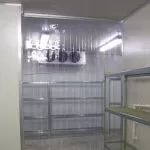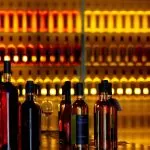Purposes of Aluminium Checker Plates in Coolrooms
Purposes of Aluminium Checker Plates in Coolrooms
- 20 August 2019
What exactly is an aluminium checker plate? It’s a strange term, but it translates readily enough. These panels of lightweight metal are installed in work areas as high-traction floor plates. Laid in a grid pattern, they’re adorned with raised edges, which serve as tiny groups of anti-slip outcroppings. Just to emphasise that point, the treads serve a purpose; they’re not there to provide an ornamental overlay for the floor.
Coolrooms at Ground Zero
Ideally, their metal floors are dry and clean. More likely, there’s a very fine film of water on the ground. That liquid is going to be slippery. Not to worry, a maintenance crew can soon get rid of the water. But what if this happens overnight? What if the water cools and turns to black ice? In the morning, some unwary staff member comes in with a food trolley. Still thinking about the day’s meal preparation work, the poor kitchen worker doesn’t see the ice. There’s a trip, a moment of pain, and then there’s a visit to the hospital to clean out a nasty cut. And that’s just with a watery film. Other substances could be on the floor, especially if a cleaning schedule is running late. They include animal oils and fatty substances, all of which are slick and slimy.
Aluminium Checker Plates: Raising the Game
More precisely, the patterns of raised metal edges raise the soles of a coolroom visitor’s shoes above the floor. Ever so slightly, but enough to make a difference, the treads lend site foot traffic an anti-slip advantage. If a loaded trolley, heavy with cold meat or canned beverages, tries to slip and slide away, it can’t; the prominently embossed diamond slivers lift the rubber casters above the treacherous flooring. Why, even if the floor is dry, the aluminium checker plates still have much to offer. Let’s say a structure is on a very slight incline. That’s not a problem, not when the three-dimensional plate projections are there to slow or even stop roving trolleys in their tracks.
Made out of tough aluminium plating, the floor panels won’t corrode. They’re loaded with surface-stamped dimples, which can assume numerous shapes. Those different patterns also exist for a purpose. They elevate foot traffic, increase operator traction, and they even perform a limited role as a fluid drainage mechanism. That means, instead of providing a base for a slippery pool of water and food oils, the dimples function as fluid channels. Naturally funnelling water before it can turn to ice, the high-traction aluminium flooring keeps staff and mobile carts on an even keel.
Mark Connelly
C&M Coolroom Services
E-mail : markconnelly@cmcoolrooms.com.au
Mobile: 0412 536 315


